Electrical devices in apartments and houses, when commissioned, provide normal conditions for the passage of current. In order to protect against electric shocks in residential premises, grounding is arranged. The work is necessary so that the "ground" and potential of the housing of household appliances are equal. Self-checking of grounding is carried out using special equipment.
- General information on grounding
- Why is grounding checked?
- Grounding testers
- Verification method
- Technology for working with the M-416 device
- Checking grounding in outlets
- Checking with a multimeter
- Checking with a control lamp
- Indirect evidence of the absence of PE
- Testing with a pointer (digital) voltmeter
- Features of checking in an apartment and a private house
- Testing in an apartment
- Check in a private house
- Test without tester and voltmeter
- Solving connection problems
General information on grounding
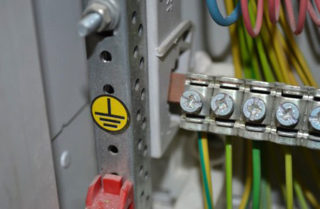
Grounding is a device that prevents the risk of electric shock when connecting the devices to earth. The system consists of a grounding conductor connected to a ground electrode and is a metal plate or wire. By design, the design is:
- working - ensures the quality of the functions of the electrical network;
- protective - prevents injury from electric shock.
The average apartment has single phase AC wiring (positive and negative). Under conditions of voltage fluctuations, the current changes direction - the charge is transferred to the equipment, and not removed from the line. A person who touches an electrical appliance can get an electric shock. In such cases, equipment fails. The device transfers an electrostatic or electrical charge to earth or to a nulling device.
The technical standards of the manufacturers of metal household appliances indicate the need to ground the connection lines.
Why is grounding checked?
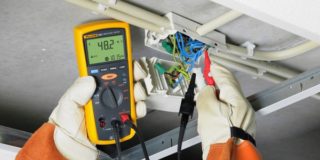
Testing the grounding condition ensures that a person is protected from electric shock. In a private house or apartment, special equipment is used, the work is carried out by representatives of the service company. Based on the results, the following are identified:
- the condition of the grounding line and its performance;
- compliance with technical standards;
- condition of soil and electrodes, grounding conductors, tires, metal connection nodes;
- the need to replace circuit connections in cases of wear;
- the need to install an RCD in conjunction with the "ground".
Periodic planned measurement in residential buildings is performed once every 3 years.
Grounding testers
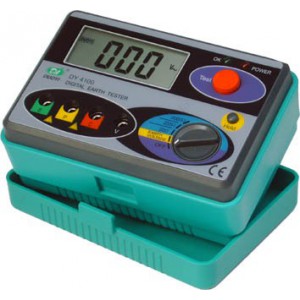
To check the grounding in a house or apartment on your own, you should start with the selection of equipment. Professional electricians use several devices:
- arrow - models with generators of small dimensions are used as autonomous power sources and rotate manually;
- switchboards powered by a galvanic battery;
- digital - the data is displayed on the LCD, the set includes batteries and contactless "pincers".
The grounding line can be independently checked using the M-416 device. An old-fashioned dial megohmmeter allows you to obtain accurate data for a reliable assessment of the line condition. The measurement limits are set on a dial-up ohmmeter. The connection diagram is shown under the cover.
Using the M-416, you can measure the contour resistance and soil indicators.
Verification method
Checking the ground loop is carried out according to a single algorithm:
- Stripping a section of the tire for good contact.
- Driving 2 additional pins into the ground by 50 cm.
- Connecting busbars to pins with device clamps according to the diagram.
- Taking measurements according to the instructions for the device.
Place electrode "C" at a distance 5 times the length of the vertical grounding electrode. Remove pins from underground utilities for data accuracy.
Technology for working with the M-416 device
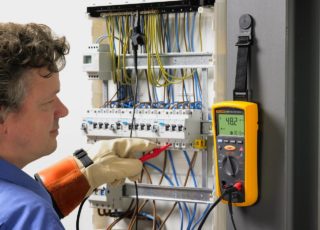
If no breakdowns are found on the "ground" line during visual inspection, the state of the contour can be recognized using the M-416 device. The work is carried out as follows:
- Power supplies are checked. The device must have 3 batteries of 1.5 V each.
- The device is placed horizontally on a flat surface.
- Calibration in progress. The range switch is placed in the "Control 5Ω" mode.
- The arrow is set to zero position. It is required to press the red button and scroll the slidewire knob. The scale displays 5 ± 0.3 ohms.
- The meter is placed at a minimum distance from the earthing switch. This will help prevent the resistance of the connecting wires from affecting the overall result.
- A check is carried out according to the scheme under the cover of the device. The main and auxiliary electrodes will need to be driven into the soil to a depth of 50 cm.
- Calculations are in progress. If the resistance is less than 10 ohms, the total must be multiplied by 1, and the switch must be transferred to x1. If the measurement result is more than 10 ohms, the switch is shifted to x5, x20, x100.
Remove the paint coat from the wire / ground connection point before measuring.
Checking grounding in outlets
You can independently determine the grounding in the outlet in several ways. Before starting work, you will need an indicator screwdriver - it identifies the zero and phase wires. If a light comes on when in contact with the terminal, this is a phase. If the indicator is off, it is zero.
Checking with a multimeter
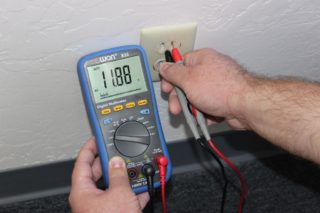
Testing is carried out even if the colors match according to the regulations. You need to work with a multimeter like this:
- Turn on the power supply to the house in the switchboard.
- Measure the voltage at the sockets. One probe is set to phase, the other to zero.
- Move the probe probe from zero to the grounding conductor - PE.
- See what the tester shows. If the result has not changed, everything is in order with the system. If the indicators are zero, the system must be grounded again.
Use tools that have insulation on the handles. If the bathroom is being checked, do not step on a wet floor.
Checking with a control lamp
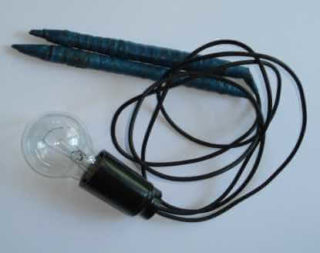
To make a control, you will need a light bulb with a socket and two copper wires attached to it. Insulation is needed between all the contacts of a homemade device. Checking by control is carried out according to the principle of a multimeter:
- The first probe is connected to zero, the second to phase.
- The probe moves from zero to ground connection.
- A lit lamp indicates the serviceability of the circuit.
- A weak light indicates incorrect operation of the circuit and the need to install an RCD.
When there is wiring in the room without color indicators, you can find out the grounding like this:
- To determine the zero and phase, one limit switch is output to the ground terminal, the second - in turn to other connections.
- The phase is at the point where the indicator light comes on.
- If the lamp does not light up, PE does not work.
If the lamp does not light up from contact with the phase, the power supply of the switchboard and the lamp itself are checked. Sometimes it does not work due to a break in the phase or zero circuit.
Indirect evidence of the absence of PE
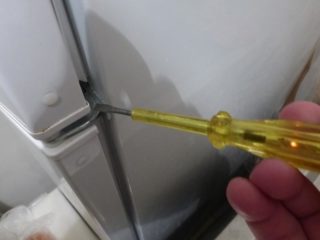
There are several points by which one can judge about the absence of PE. Apartment and house owners should be alerted:
- stable electric shocks from a boiler, washing machine, dishwasher, refrigerator;
- speaker noises when playing music;
- there is a lot of dust around old batteries.
Call specialists immediately - in case of serious short circuits on the lines, there are risks of death from electric shock.
Testing with a pointer (digital) voltmeter
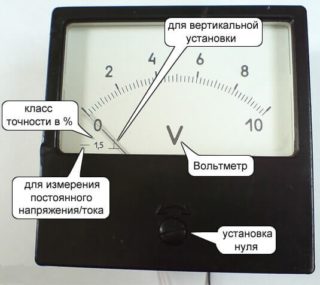
Checking the voltage value and its presence is carried out using AC voltmeters. Pointers work without a power source, and digital ones function in any position, are not damaged by mechanical stress.
The correct algorithm for using a voltmeter:
- The maximum permissible measurement value for the device is determined by the largest number on the scale.
- Clarification of the unit of measurement of the device - microvolts, volts, millivolts.
- Connecting a voltmeter in parallel with a section of the electrical network and monitoring the polarity with a wire.
- Fastening the wires of the switch device to the nuts and screws. Constant voltage models are labeled plus and minus.
When the mains voltage is more than 60 V, work with dielectric gloves, use insulated probes.
Features of checking in an apartment and a private house
The technology of testing grounding for houses and apartments has several differences.
Testing in an apartment
All metal objects must be grounded - radiators, bathtubs, household appliances. It is also worth protecting the sockets and clarifying whether the third contact is included in the circuit. There are several techniques.
Screwdriver + tester + insulated wire
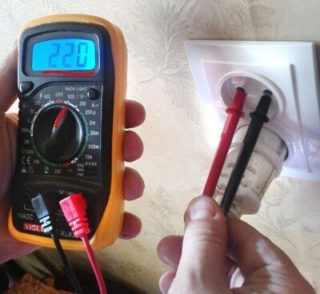
A wire with probes at both ends is used. They work like this:
- They check the voltage at the outlet using a tester, a table lamp, and a smartphone charger. The plug is inserted into the socket very carefully.
- The working outlet is turned off through the RCD of the shield, switching the machine off.
- Remove the cover from the socket and inspect the connection of the ground contact. It is connected to a separate cable or neutralized with terminals.
- Assemble the outlet and turn on the RCD.
- If there is grounding, check with a tester or indicator screwdriver. The contact should not overlap the phase.
- They check the grounding of the wire - find the phase, remove the finger from it and place the probe on the sensor. It shouldn't burn.
The serviceability of the "ground" is evidenced by lighting up or increased brightness of the indicator.
Careful check with a long wire
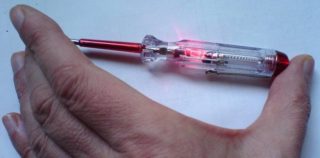
You will need an indicator screwdriver, a tester, and a long dipstick. The work algorithm is as follows:
- Open the electrical panel, use an indicator screwdriver to inspect the yellow-green wire for the absence of grounding circuit voltage.
- Find "zero" (blue wire) and attach a conductor probe to it. The other probe touches the yellow-green wire. By the operation of the machine, one can judge the health of the wire.
- Return the RCD handle to the platoon. One end of the wire remains at zero, the other touch all sockets and metal products in the room. With a working circuit, the machine is triggered.
- The bathroom is being checked. The SUP box with a metal bus and wires is located 50 cm from the floor. There should be no tension here.
After checking the voltage in the bathroom, tighten the connections of all bolts.
Check in a private house
The measurement technique for a private house has significant differences from work in an apartment.
Testing the health of soil and metal bonds
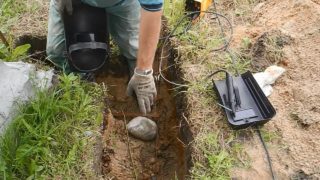
Activities involve visual inspection and the use of special devices:
- For visual inspection, hit the contacts with an insulated hammer. The handler should rattle.
- Checking the resistance of metal components with an ohmmeter or multimeter. The acceptable limit of the result is 0.05 ohms.
- Grounding terminal in another area when the measurements differ from the normative ones.
Check the soil and metal bonds in summer or spring - during this time there is less rainfall.
Test without tester and voltmeter
- Strip the ends of the wire from insulation and insert into the socket - the light will light up.
- Correctly measure the grounding with a probe: remove one of the wires and touch the grounding point. If the lamp does not light up, the wire is removed from another hole.
- If the RCD has worked, the grounding is of good quality.
- Look at the glow of the lamp. It is brighter when connecting phase and ground than when connecting phase and zero.
Using indicators for euro sockets, you can find all the shortcomings of the connection.
Solving connection problems
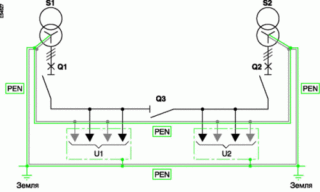
If checking the ground loop with a homemade control, a voltmeter or multimeter does not give a result, you will need:
- Plug in the appliance without touching the contact and see if it will work.
- Turn off the power in the switchboard, remove the plug from the socket.
- Disassemble the socket and inspect the wires, contact connection points. There is no ground if there is no connection.
Independent work with the electrical network in case of violation of the algorithm can cause injuries and fires as a result of a break in the "zero". To prevent this, use the services of an electrician.

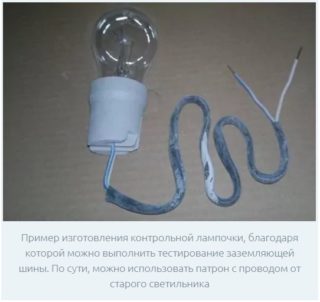








the apartment is equipped with single-phase AC wiring (positive and negative charge). Under conditions of voltage fluctuations, the current changes direction - the charge is transferred to the equipment, and not removed from the line.
What is this nonsense ???